Young children & urban green space: access during daycare, parks as commons, demand hotspots
子どもと都市緑地:認可外保育施設における緑地へのアクセス、コモンズとしての公園、需要ホットスポット

Young children’s access to nature is vital for their mental and physical health and development. But daycare centers in high density urban areas often cannot provide large gardens, and using parks as commons can lead to conflicts with other users and overcrowding. This research examines what challenges daycare centers in Japan face in providing young children with nature contact, what expectations parents have for children’s recreation while in daycare, and whether green space demand hotspots can be identified to improve green space planning.
First results suggest that UDCs use a variety of GS and aim to provide daily access. Caregivers are vital in mediating children’s access, but locally available GS diversity, quality and quantity as well as institutional support were perceived as lacking. Parents did not rank GS high among their priorities when selecting daycare providers, and showed limited awareness of conflicts during GS visits. This implies strong public investment into holistically improving GS diversity, quality and quantity is urgently needed from the perspective of public health and urban planning. This work is undertaken with the help of research assistant Ms Lihua Cui (Kyoto University) and funded by the Japan Society for the Promotion of Science with a three-year Grant-in-Aid for Young Scientists (B) from 2017-2020.
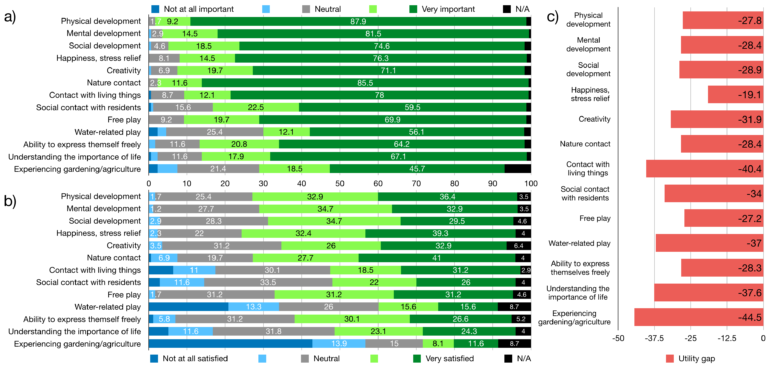
Private and informal green space as green infrastructure: towards participatory maintenance policies
グリーンインフラとしての私有緑地・非公式緑地:参加型管理の方針へ
This research examined and compared how private and informal green space can function as green infrastructure. In particular, we focus on the role and potential of participatory maintenance policies. Fieldwork stretches across several sites in Tokyo (Japan). The project is a joint effort lead by PI Dr. Katsunori Furuya (Chiba University) and conducted in collaboration with Dr. Yui Takase (Ibaraki University), my former PhD student and now Dr. Minseo Kim (Chiba University) and Shōkan Kō (Chiba University). First results reveal that how residents view informal greenspace in Ichikawa City depended on how much contact with formal green space they have in their daily life. A survey of the North part of the city found 6% of land use consisting of IGS. This work is funded by the Japan Society for the Promotion of Science with a three-year Grant-in-Aid for Scientific Research (C) from 2017-2020.
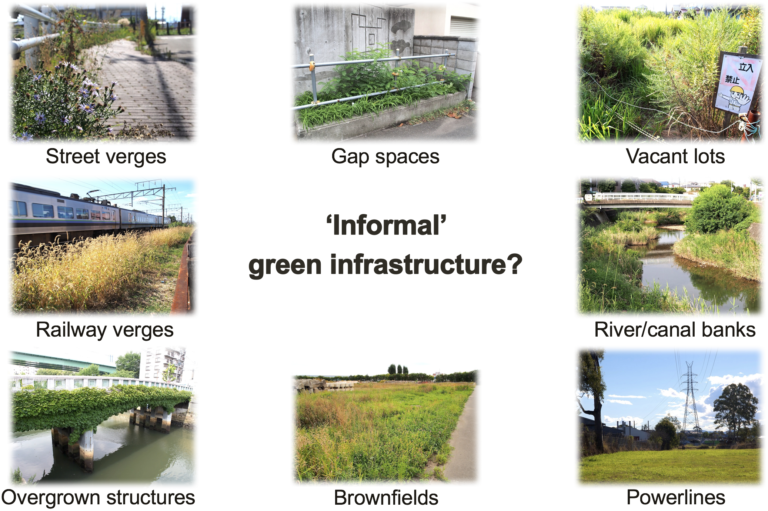
Informal urban green space: participatory management, preferences for management goals in shrinking cities
非公式緑地:参加型管理、縮小都市における住民が望む管理の姿
Can residents manage informal urban green space themselves? Do they want to? How much municipal support do they require? These questions have emerged as central problems from earlier IGS research, and are key to unlocking the recreational potential of IGS. I examine them drawing on data from four major Japanese cities (Sapporo, Kyoto, Kitakyushu, Nagano). I found that residents know IGS in their neighborhood throughout all cities, prefer management over non-management, and propose eight principles for strategic IGS planning policy in Japan. This research was funded by the Research Institute for Humanity and Nature with a one-year Early Career Researcher Support Grant from 2016-2017.
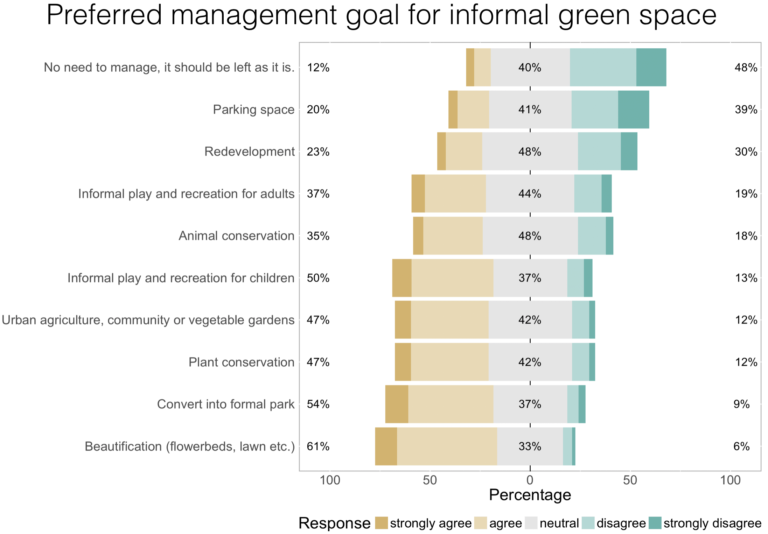
Ready for more-than-human? Urban residents’ willingness to coexist with animals and plants
人間の枠を超える?都市住民がどこまで動植物と共生したいのか
Cities do not just belong to us humans. But how willing are residents to share their neighborhoods with non-humans, be it animals or plants? What animals do we want to live close by, what animals are we reluctant or barely tolerate? Are these preferences related to place and culture? I found that residents in different countries react to different animals in different ways, and informal green space may play a role as a ‘territory of encounter’ where we relax our expectations, opening up space where human rules are weakened.
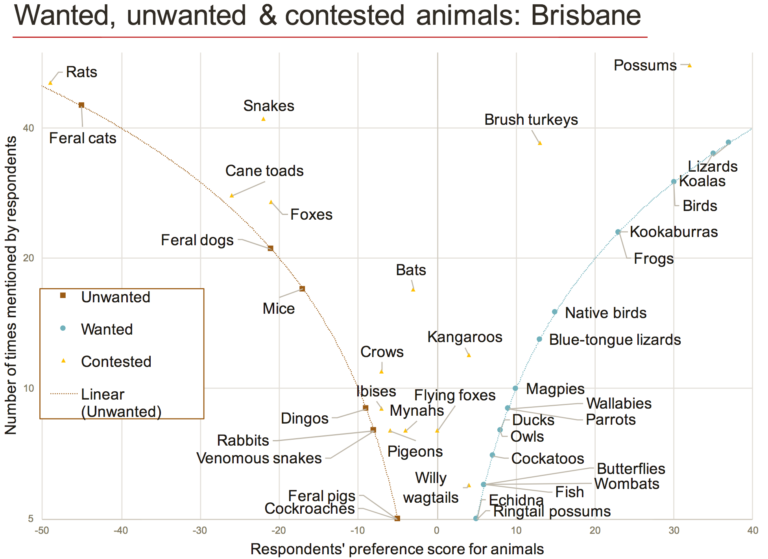
Informal urban green space as anti-gentrification strategy?
ジェントリフィケーション対策としての非公式緑地?
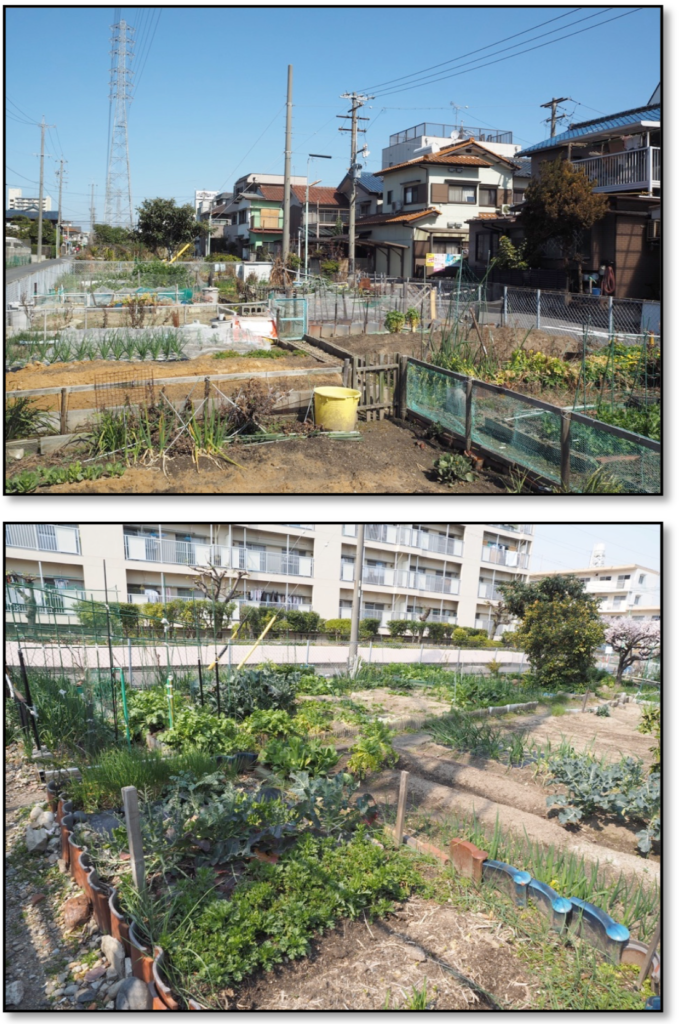
Making neighborhoods greener can cause land prices to rise, a process called eco-gentrification. This research used GIS and statistical analyses to show that informal green space is available regardless of local socio-economic conditions. It then took a closer look at several Japanese cases to look at ways IGS can be ‘just green enough’: from informal riverside community gardens to formalized usage arrangements for powerline utility corridors in Nagoya.
Informal urban green space: trilingual systematic reviews of benefits for residents, benefits for biodiversity
非公式緑地の多言語文献レビュー:住民や生物多様性に関する利益
I conducted two comprehensive systematic reviews in English, German and Japanese of the literature on informal urban green spaces. The first review found that informal green space plays an important role for urban residents, providing a large variety of recreational opportunities beyond a simple park substitute. The second review identified informal green space as a major factor in urban biodiversity conservation, and argues routine maintenance threatens this function. Part of my doctoral research.
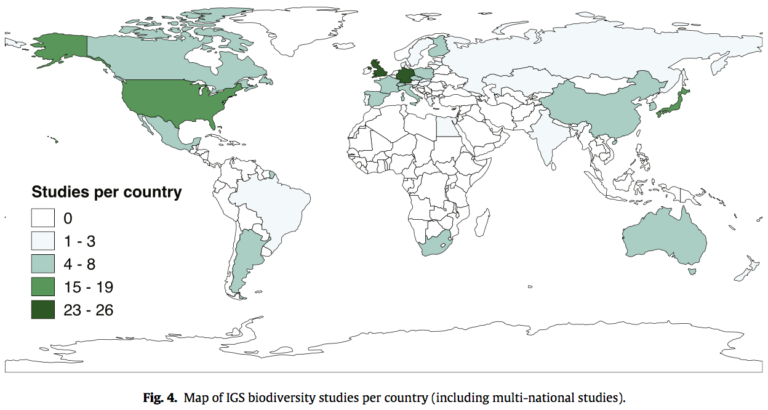
Informal urban green space: human perception, preference, and past and present use in Sapporo and Brisbane
非公式緑地:住民の認識、選好、過去の利用(札幌市・ブリスベン市)
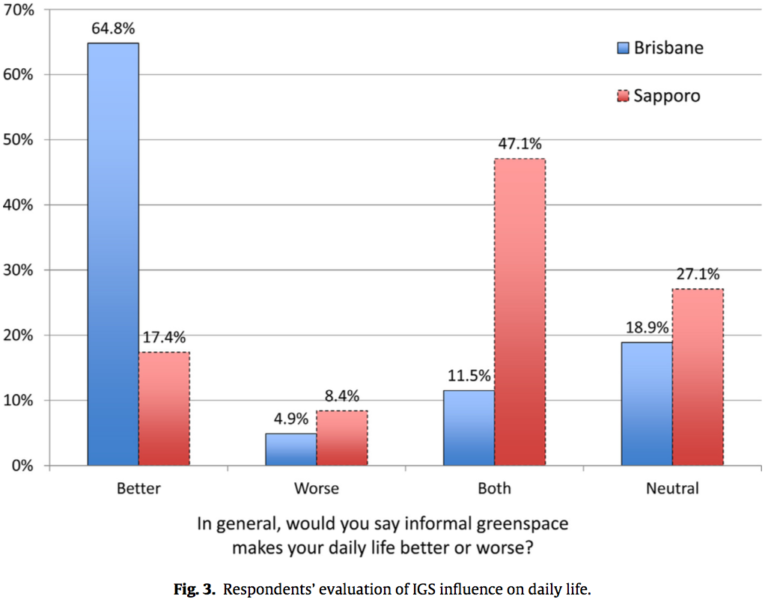
Using mail-back surveys, this research examined what role informal urban green space plays for residents in their daily lives, and how they evaluate and use it. Results showed that more residents than expected are already using IGS for recreation, even though their view of it as an element of the urban landscape is not always positive. Evaluation and use differed between Australian and Japanese survey sites.
Informal urban green space: rapid assessment of quantity and IGS types
非公式緑地:調査方法やタイポロジー
Through two extended field surveys in Sapporo and Brisbane, I developed a rapid assessment method to measure how much informal urban green space exists in cities, what types it consists of, what its vegetation structure is, and how accessible it is. Results show IGS accounts for about five percent of central urban land use, with vacant lots and street verges as major contributing types.
